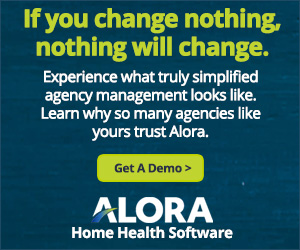
11 Dec Quality & Performance Metrics Measurement for Home Health Care Agencies
The importance of quality & performance metrics measurement for homecare agencies
When it comes to home healthcare, the care should go beyond routine so that it becomes a more compassionate experience. The metrics we will discuss are not just numbers; they are the guiding principles that shape the essence of home healthcare. Join us as we unravel the significance of each metric by demystifying its role in enhancing patient outcomes, ensuring excellence, and creating an environment where the human touch remains at the forefront despite technological advancements.
This is an invitation for you to understand, appreciate, and actively contribute to the evolution of home healthcare. So, let’s step into this journey where metrics act as our compass, guiding us toward a future marked by unparalleled care and service.
Defining Quality Metrics in Homecare Agencies
Quality indicators in home health care serve as benchmarks to assess how things are progressing. It helps to focus on what truly matters, such as whether patients are receiving the best care. Think of it this way, does the care provided cater to needs? Does it meet the requirements of each person at home? That’s a quality indicator there. It’s all about tailoring care to fit the individual perfectly, or at least close to perfect.
Assessing Quality Metrics
Defining and assessing these metrics revolves around posing specific questions while genuinely paying attention to what matters the most. For example, we examine factors such as satisfaction, treatment effectiveness, and how well the care plan aligns with the patient’s needs.
Why Are Performance Metrics Crucial in Home Care?
In home health care, performance metrics play an essential part and are used for measuring how well the care is given. However, these measures go beyond the accomplishment of tasks as they also form the basis for evaluation of the quality, efficiency, and the overall performance of a care team. Similar to the critical review process, performance metrics give an idea of how well a home healthcare staff performs, thereby ensuring everyone works well based on his/ her position.
This means that it will be provided with a clear conscience, knowing that it was not just offered, but it was equipped with perfection. These are the metrics which act like a scorecard checking on things like patient care, communication, and the efficiency of these cares.
How Do Performance Metrics Impact Patient Outcomes?
The core of this issue can be boiled down to the implications for actual patient outcomes as they develop into guidelines with pertinent questions regarding patients’ improvement, comfort, and security in familiar surroundings.
As seen in the metrics, a good-performing care team results in positive patient outcomes. Focus includes both the routine management of patient care and also positive change in patient’s lives. Performance standards, therefore, help ensure that the quality of service delivered exceeds expectations and positively contributes to patients’ recovery or satisfaction with how their circumstance is managed.
Staff Training and Development Metrics
Your care team should be excellent, and staff training is the secret sauce that goes a long way in ensuring this. In this department, metrics are for ensuring that our team is educated and thoroughly trained. This involves looking at issues like how fast new skills can be adopted by the team, whether they feel sure their efforts will improve efficiency, and whether training improves their performance at work.
The team develops continuously. An organization’s team is trained on a constant basis; this is reflected in their keenness, trend analysis, and professionalism in what transpires. Overall, this has a large impact on performance. That is, the excellent care becomes even better with time.
Technological Integration Metrics
Choosing the best homecare technology can be a valuable undertaking in home-based nursing care and is all about making care easy and effective. There are no complex issues to evaluate here. Are you making care more efficient? Does your team understand its patients better? Does your home health software support your agency’s workflow and goals?
Think about technology as a magic wand and ensure that we have all the needed tools that allows us to deliver exceptional healthcare services in a place which our patients feel comfortable.
Continuous Improvement Metrics
Metrics act as a good compass that guides us towards improving things. Metrics are about finding points where we can do better. For instance, can care be more personalized? Also, is it possible to improve our communication systems to be more customer-centric? Continuous improvement metrics resemble a spotlight and enable us to find those imperfect areas that need some sprucing up.
Strategic adjustments in line with data we get from the metrics mean introducing a fresh training policy for our staff or instituting a patient feedback mechanism. These are small but purposeful steps towards massive transformations.
This relates to the question asked in terms of the human element, i.e., the psychological/emotional impact of caring/service provision. It’s more than a question of “doing the job,” but making sure that it was done with the feeling that makes home health care different from hospital or nursing home care.
The Take away
As we stand on the threshold of progress, the accurate measure of success in home health care is not solely in the numbers but in the lives touched, the comfort provided, and the positive impact made. Each metric discussed is a commitment to a future where home health care is a service and a beacon of excellence, a haven of compassion, and a testament to the unwavering dedication to the well-being of those we serve.
So, let us carry forward the lessons learned, the insights gained, and the commitment forged as we collectively shape the future of home health care with compassion, precision, and an unyielding dedication to excellence.
Patient-centric metrics, in their simplicity, become the voice of those under our care—measuring both the effectiveness of treatments and the warmth and comfort experienced by individuals in the sanctuary of their homes. Operational efficiency metrics, stripped of complexity, are the silent orchestrators ensuring that every resource is utilized wisely, every service is delivered promptly, and the cost-effectiveness of care remains a cornerstone.
Author’s Note: Views, information, and guidance in this resource are intended for information only. We are not rendering legal, financial, accounting, medical, or other professional advice. Alora disclaims any liability to any third party and cannot make any guarantee related to the content.
Additional Home Health Agency blogs:

Alora’s home health software solution is ideal for agencies operating in both skilled and non-skilled care. Alora’s easy to use interface and robust reporting capabilities allow agencies to stay on top of quality assurance and analysis of key performance indicators. Measurement, compliance, and administrative analysis are critical components of Alora’s comprehensive agency workflow tools.



No Comments